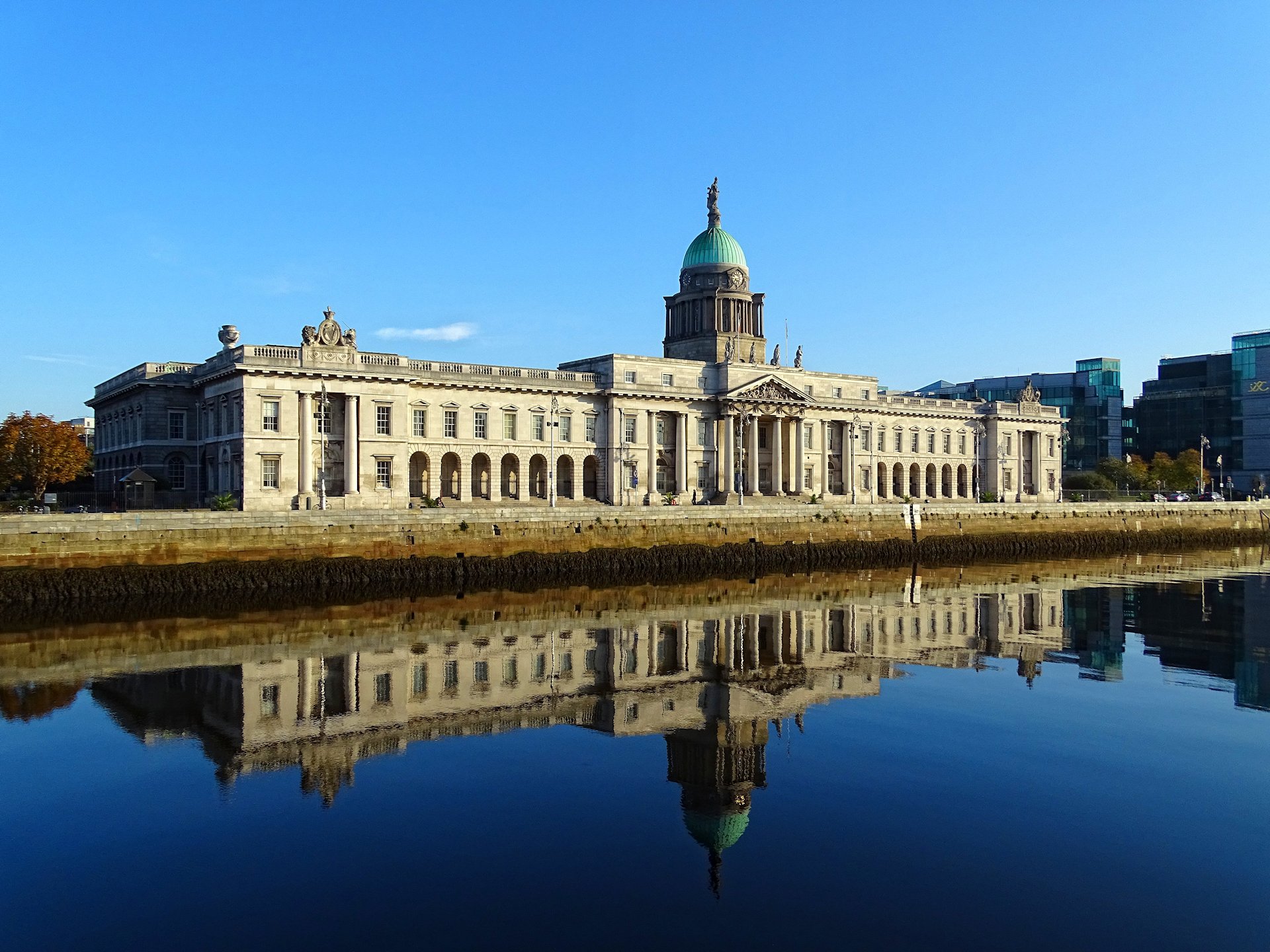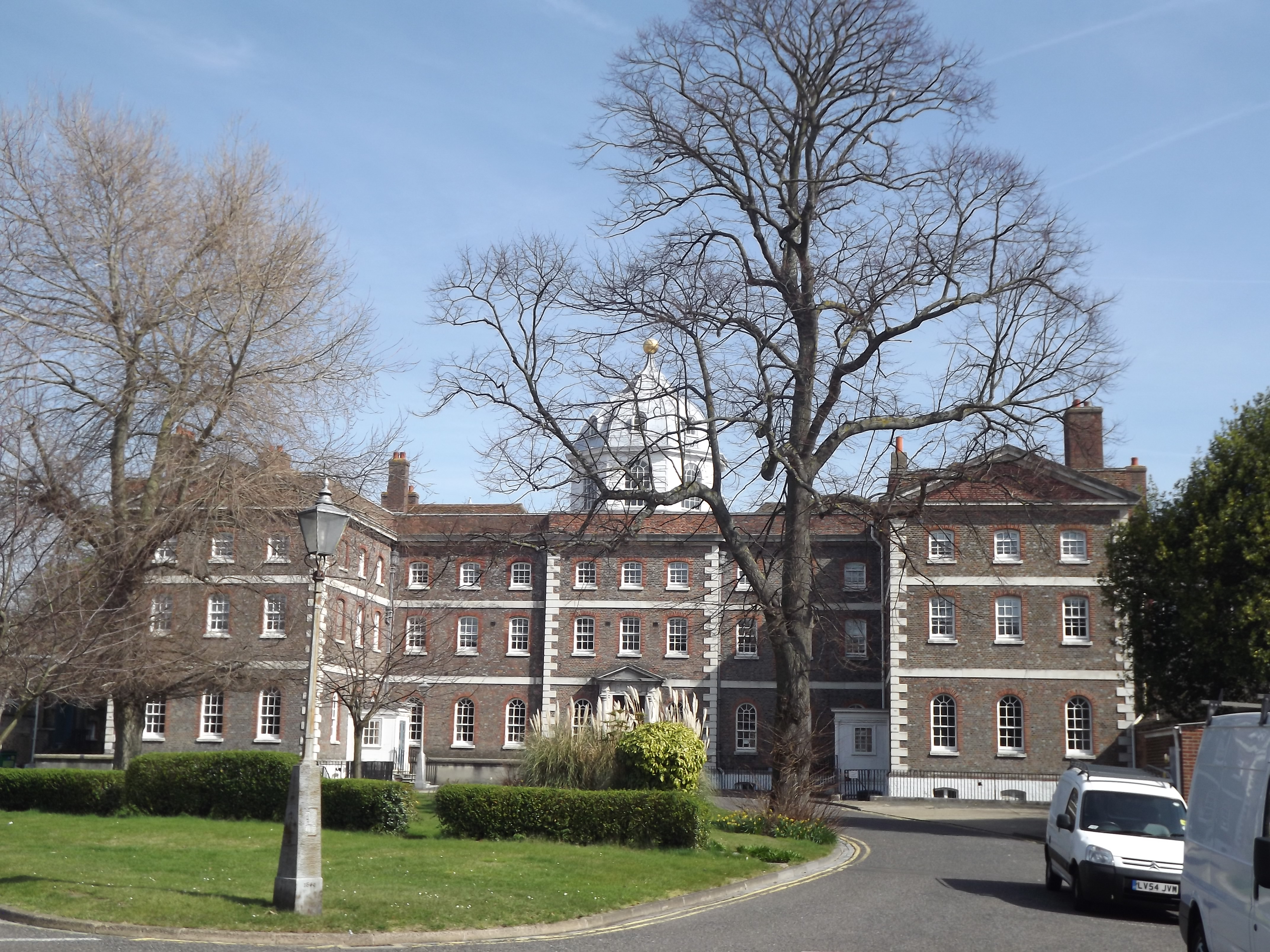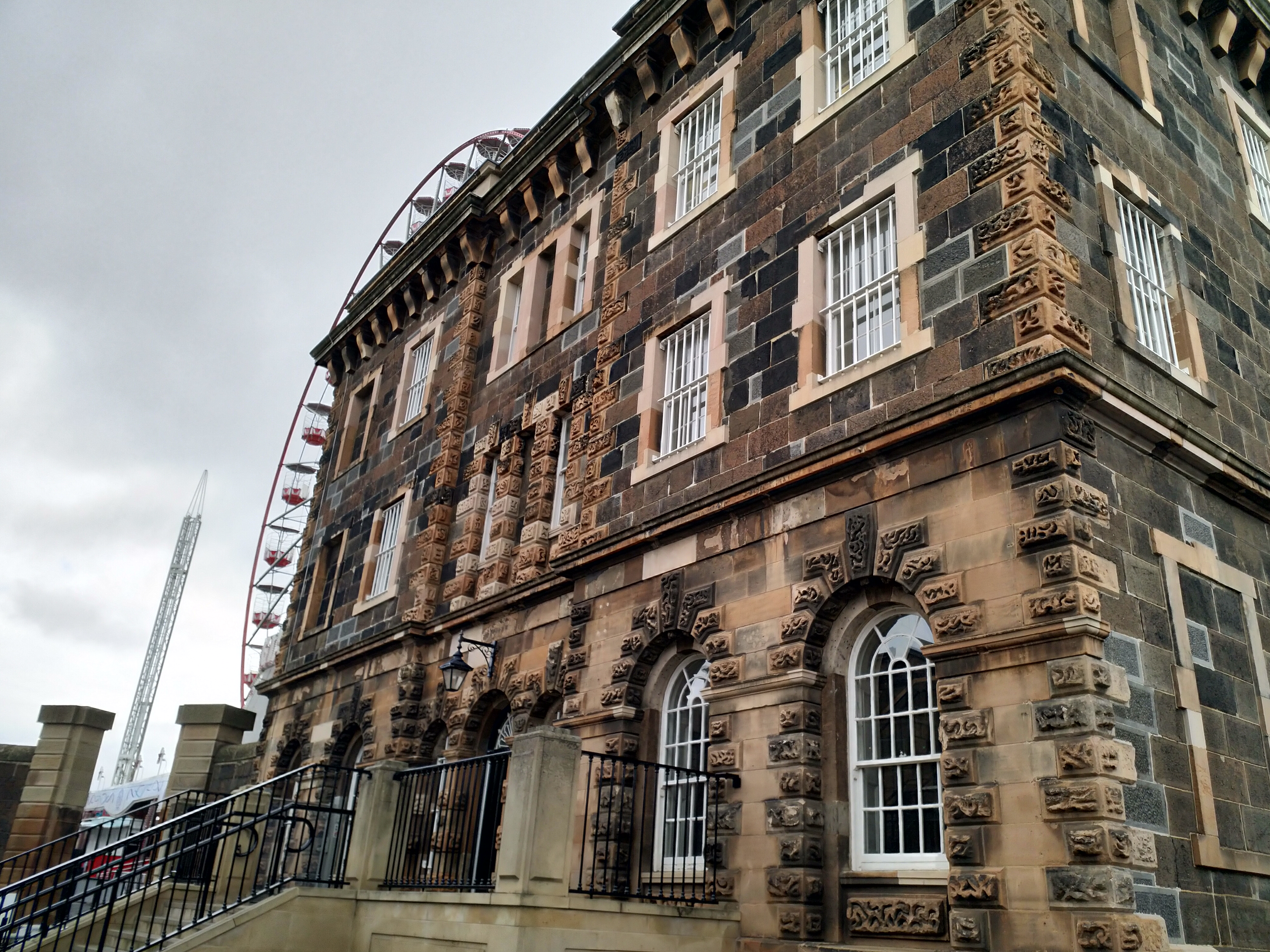|
Thomas Ellis Owen
Thomas Ellis Owen (1805–1862) was an English architect and developer responsible for many of the buildings that still exist in Southsea and Gosport. He designed many churches in Hampshire and some of his work that still stands today can be found in Shropshire, Dorset and Pembrokeshire. Biography Early life and training Owen was born in Middlesex, the son of Mary and Jacob Owen, an architect for the Royal Engineers Ordnance Department in Portsmouth. He trained as an architect and, although his architecture was probably influenced by John Nash, Owen had a lighter touch that belonged more to his Georgian roots than the Victorian times he mainly practiced in. On completing his articles, Owen travelled through Italy studying its architectural history and development. Returning to England, Thomas married Catherine, the daughter of one of his father's colleagues J.W Higgins, surveyor of Government Works. Early career In the 1820s he entered into a private practice with his fathe ... [...More Info...] [...Related Items...] OR: [Wikipedia] [Google] [Baidu] |
Jacob Owen
Jacob Owen (28 July 1778 – 29 October 1870) was a United Kingdom, British Architecture, architect and Civil engineering, civil engineer of the nineteenth century. His architectural work is most closely associated with Dublin, Ireland. He also contributed extensively to the shaping of public architecture throughout Ireland, through his design of schools, asylums, prisons and other public buildings associated with British rule. Biography Early life and training Jacob Owen was born on 28 July 1778 in Llanfihangel-yng-Ngwynfa, Wales, the son of Margaret Owen (née Ellis) of Llanfihangel and Jacob Owen of St Chad's Church, Shrewsbury, St Chad's parish, Shrewsbury.E.R. Morris, 'Jacob Owen' Montgomeryshire collections relating to Montgomeryshire and its borders 68 - Vol 60 (1967): 166-7 It is not known how long Owen's father remained in Llanfihangel. The Montgomeryshire historian E.R. Morris noted he had a peripatetic engineering career throughout Wales and Shropshire. Following ... [...More Info...] [...Related Items...] OR: [Wikipedia] [Google] [Baidu] |
Jeremiah Owen
Jeremiah Owen (22 February 1802 – 2 August 1850) was a mathematician, naval architect and Chief metallurgy, Metallurgist to the Admiralty (United Kingdom), Admiralty during the first half of the nineteenth century. Owen took part in the debates over the professionalization of naval architecture in the Royal Navy and was active in campaigns for Polish human rights in the 1830s. He his chiefly known for his scientific work on metals in the design of naval vessels.Mike Chrimes, “Jeremiah Owen fl.1800 – 1850, A Biographical Dictionary of Civil Engineers in Great Britain and Ireland, Vol 1, 497 Early life Jeremiah Owen was the eldest son of the architect and engineer Jacob Owen and his wife Mary Underhill, through whom he was related to the mystic and pacifist Evelyn Underhill, Bishop Francis Underhill, the Professor of Anatomy and President of the Royal College of Physicians, Edinburgh Charles Edward Underhill, and the jurist and author, Sir Arthur Underhill. Owen was born in L ... [...More Info...] [...Related Items...] OR: [Wikipedia] [Google] [Baidu] |
People From Middlesex
The term "the people" refers to the public or Common people, common mass of people of a polity. As such it is a concept of human rights law, international law as well as constitutional law, particularly used for claims of popular sovereignty. In contrast, a people is any plurality of Person, persons considered as a whole. Used in politics and law, the term "a people" refers to the collective or community of an ethnic group or nation. Concepts Legal Chapter One, Article One of the Charter of the United Nations states that "peoples" have the right to self-determination. Though the mere status as peoples and the right to self-determination, as for example in the case of Declaration on the Rights of Indigenous Peoples, Indigenous peoples (''peoples'', as in all groups of indigenous people, not merely all indigenous persons as in ''indigenous people''), does not automatically provide for independence, independent sovereignty and therefore secession. Indeed, judge Ivor Jennings i ... [...More Info...] [...Related Items...] OR: [Wikipedia] [Google] [Baidu] |
19th-century English Architects
The 19th century began on 1 January 1801 (represented by the Roman numerals MDCCCI), and ended on 31 December 1900 (MCM). It was the 9th century of the 2nd millennium. It was characterized by vast social upheaval. Slavery was Abolitionism, abolished in much of Europe and the Americas. The First Industrial Revolution, though it began in the late 18th century, expanded beyond its British homeland for the first time during the 19th century, particularly remaking the economies and societies of the Low Countries, France, the Rhineland, Northern Italy, and the Northeastern United States. A few decades later, the Second Industrial Revolution led to ever more massive urbanization and much higher levels of productivity, profit, and prosperity, a pattern that continued into the 20th century. The Catholic Church, in response to the growing influence and power of modernism, secularism and materialism, formed the First Vatican Council in the late 19th century to deal with such problems an ... [...More Info...] [...Related Items...] OR: [Wikipedia] [Google] [Baidu] |
1862 Deaths
Events January * January 1 – The United Kingdom annexes Lagos Island, in modern-day Nigeria. * January 6 – Second French intervention in Mexico, French intervention in Mexico: Second French Empire, French, Spanish and British forces arrive in Veracruz, Mexico. * January 16 – Hartley Colliery disaster in north-east England: 204 men are trapped and die underground when the only shaft becomes blocked. * January 30 – American Civil War: The first U.S. ironclad warship, , is launched in Brooklyn. * January 31 – Alvan Graham Clark makes the first observation of Sirius B, a white dwarf star, through an eighteen-inch telescope at Northwestern University in Illinois. February * February 1 – American Civil War: Julia Ward Howe's "Battle Hymn of the Republic" is published for the first time in the ''Atlantic Monthly''. * February 2 – The Dun Mountain Railway, first railway is opened in New Zealand, by the Dun Mountain Copper Mining Compan ... [...More Info...] [...Related Items...] OR: [Wikipedia] [Google] [Baidu] |
1805 Births
After thirteen years the First French Empire abolished the French Republican Calendar in favour of the Gregorian calendar. Events January–March * January 11 – The Michigan Territory is created. * February 7 – King Anouvong becomes ruler of Vientiane on the death of his brother Inthavong. * February 15 – The Harmony Society is officially formed as a Christian community in Harmony, Pennsylvania. * March 1 – Justice Samuel Chase is Impeachment of Samuel Chase, acquitted of impeachment charges by the United States Senate. * March 5 – The New Brunswick Legislature passes a bill to advance literacy in the province, which eventually leads to the creation of public education in Canada. April–June * April 7 – Ludwig van Beethoven, Beethoven's Symphony No. 3 (Beethoven), Symphony No. 3, ''Eroica'', has its public premiere at the Theater an der Wien in Vienna under his baton. * April 27 – Battle of Derne: United States Marines and Berbers attack the Tripoli, Lib ... [...More Info...] [...Related Items...] OR: [Wikipedia] [Google] [Baidu] |
Blue Plaque
A blue plaque is a permanent sign installed in a public place in the United Kingdom, and certain other countries and territories, to commemorate a link between that location and a famous person, event, or former building on the site, serving as a historical marker. The term is used in the United Kingdom in two senses. It may be used narrowly and specifically to refer to the "official" scheme administered by English Heritage, and for much of its history restricted to sites within Greater London; or it may be used less formally to encompass a number of similar schemes administered by organisations throughout the UK. The plaques erected are made in a variety of designs, shapes, materials and colours: some are blue, others are not. However, the term "blue plaque" is often used informally to encompass all such schemes. History The "official" scheme traces its origins to that launched in 1866 in London, on the initiative of the politician William Ewart (British politician), Willi ... [...More Info...] [...Related Items...] OR: [Wikipedia] [Google] [Baidu] |
Thomas Ellis Owen English Heritage Plaque
Thomas may refer to: People * List of people with given name Thomas * Thomas (name) * Thomas (surname) * Saint Thomas (other) * Thomas Aquinas (1225–1274) Italian Dominican friar, philosopher, and Doctor of the Church * Thomas the Apostle * Thomas (bishop of the East Angles) (fl. 640s–650s), medieval Bishop of the East Angles * Thomas (Archdeacon of Barnstaple) (fl. 1203), Archdeacon of Barnstaple * Thomas, Count of Perche (1195–1217), Count of Perche * Thomas (bishop of Finland) (1248), first known Bishop of Finland * Thomas, Earl of Mar (1330–1377), 14th-century Earl, Aberdeen, Scotland Geography Places in the United States * Thomas, Idaho * Thomas, Illinois * Thomas, Oklahoma * Thomas, Oregon * Thomas, South Dakota * Thomas, Virginia * Thomas, Washington * Thomas, West Virginia * Thomas County (other) * Thomas Township (other) Elsewhere * Thomas Glacier (Greenland) Arts and entertainment * ''Thomas'' (Burton novel), a 1969 novel by Hes ... [...More Info...] [...Related Items...] OR: [Wikipedia] [Google] [Baidu] |
Magistrate
The term magistrate is used in a variety of systems of governments and laws to refer to a civilian officer who administers the law. In ancient Rome, a '' magistratus'' was one of the highest ranking government officers, and possessed both judicial and executive powers. In other parts of the world, such as China, magistrate is a word applied to a person responsible for administration over a particular geographic area. Today, in some jurisdictions, a magistrate is a judicial officer who hears cases in a lower court, and typically deals with more minor or preliminary matters. In other jurisdictions (e.g., England and Wales), magistrates are typically trained volunteers appointed to deal with criminal and civil matters in their local areas. Original meaning In ancient Rome, the word '' magistratus'' referred to one of the highest offices of state. Analogous offices in the local authorities, such as '' municipium'', were subordinate only to the legislature of which they generally ... [...More Info...] [...Related Items...] OR: [Wikipedia] [Google] [Baidu] |
Lord Mayor Of Portsmouth
This is a description of the role of The Lord Mayor of Portsmouth and a list of notable Mayors and the later Lord Mayors of the city of Portsmouth in the United Kingdom. Portsmouth had elected a mayor annually since 1531. The city was awarded the dignity of a Lord Mayoralty by letters patent dated 10 July 1928. When the city became a non-metropolitan borough in 1974 the honour was confirmed by letters patent dated 1 April 1974. History Portsmouth was granted Letters Patent in 1926, providing that Portsmouth would henceforth be a city and in 1928 further letters patent provided that the Chief Magistrate should cease to be called simply Mayor and would be raised to the dignity of Lord Mayor. Before local government reorganisation in 1974 any citizen could be Lord Mayor, although in practice it was usually a member of the council. After 1974 it was a requirement that the Lord Mayor had to be a serving member of the elected council. The Lord Mayor nominates the Lady Mayores ... [...More Info...] [...Related Items...] OR: [Wikipedia] [Google] [Baidu] |
Charles Lanyon
Sir Charles Lanyon Deputy Lieutenant, DL, Justice of the Peace, JP (6 January 1813 – 31 May 1889) was an English Architecture, architect of the 19th century. His work is most closely associated with Belfast, Northern Ireland. Biography Lanyon was born in Eastbourne, Sussex (now East Sussex) in 1813. His father was John Jenkinson Lanyon, a purser in the Royal Navy, and his mother was Catherine Anne Mortimer. Following his education, he became an apprentice civil engineer with Jacob Owen in Portsmouth. When Owen was made senior Engineer and Architect of the Irish Board of Works and moved to Dublin, Lanyon followed. In 1835, after the Napoleonic Wars, he married Owen's daughter, Elizabeth Helen. They had ten children, including Sir William Owen Lanyon, an army officer and colonial administrator. Charles Lanyon was county surveyor[2] in Kildare briefly, before moving on to Antrim in 1836. He remained county surveyor of Antrim until 1860 Before the American Civil War when he resig ... [...More Info...] [...Related Items...] OR: [Wikipedia] [Google] [Baidu] |
St Jude's Church, Southsea
St Jude's Church, Southsea is a Church of England church in Southsea, Hampshire, built in 1851 by Thomas Ellis Owen as part of a housing development. It was listed Grade II on the National Heritage List for England The National Heritage List for England (NHLE) is England's official database of protected heritage assets. It includes details of all English listed buildings, scheduled monuments, register of historic parks and gardens, protected shipwrecks, ... in September 1972. References category:Church of England church buildings in Hampshire category:Churches completed in 1851 category:Grade II listed churches in Hampshire Religious buildings in Portsmouth {{UK-church-stub ... [...More Info...] [...Related Items...] OR: [Wikipedia] [Google] [Baidu] |







